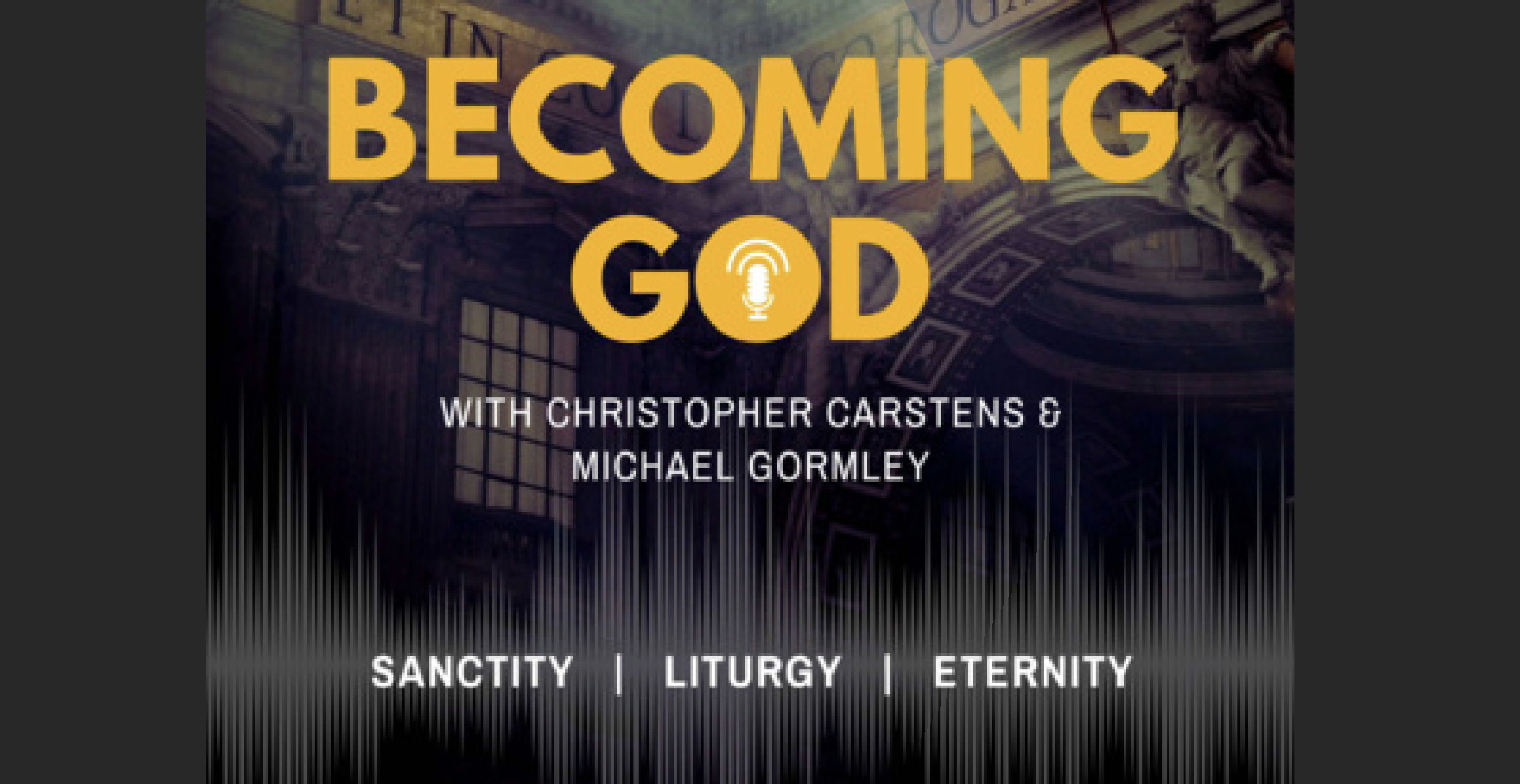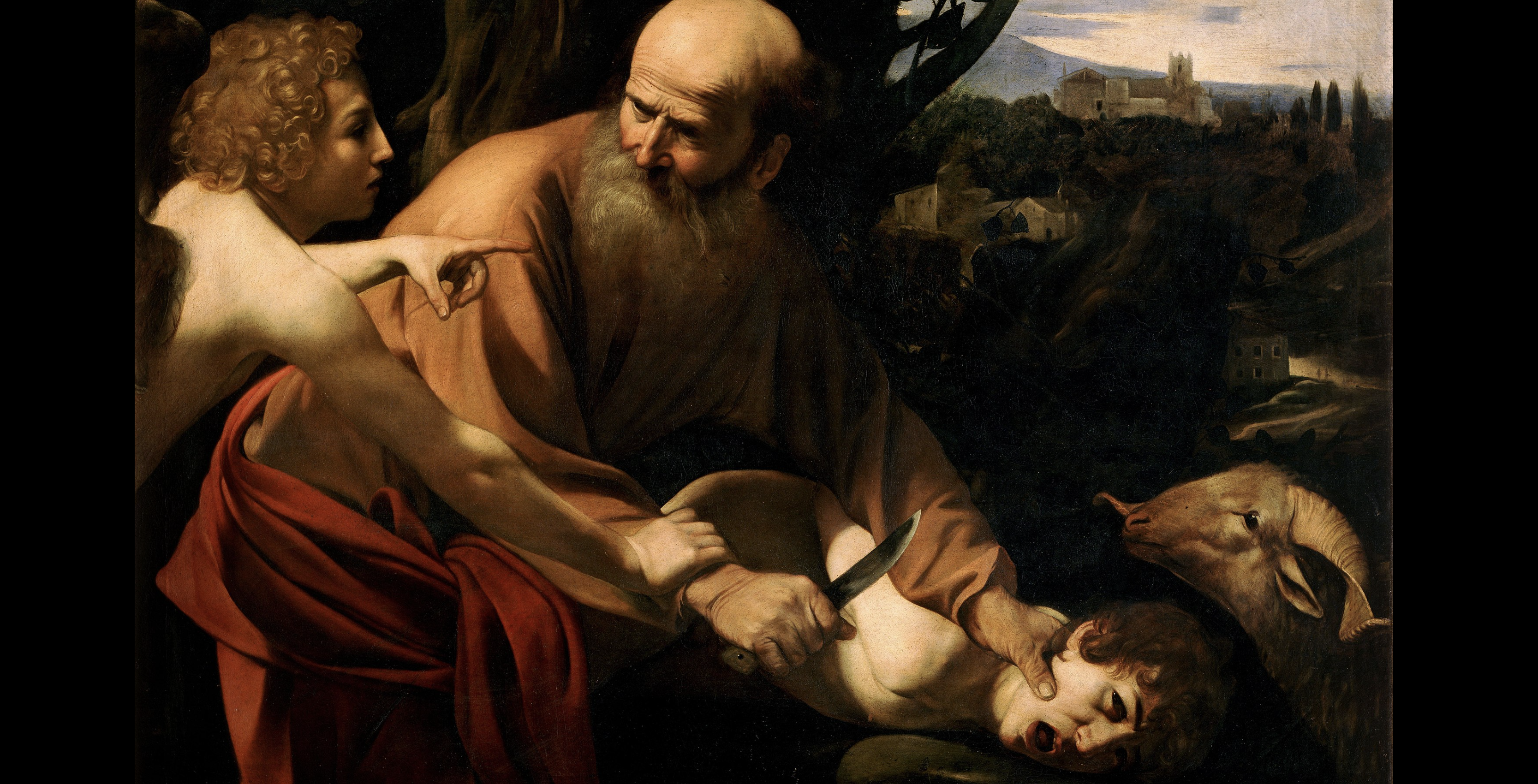Online Edition: September 2008
Vol. XIV, No. 6
Beauty as Expanded Reason:
The Shrine of Our Lady of Guadalupe
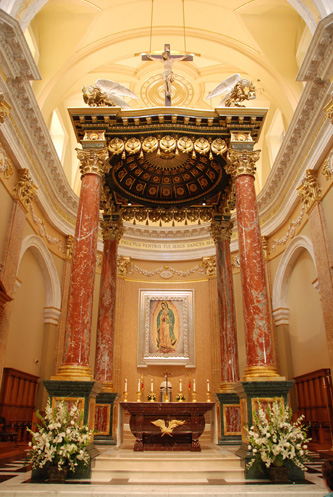
Chancel, Shrine of Our Lady of Guadalupe, LaCrosse, Wisconsin
[Photo:© 2008 – Duncan G. Stroik, Architect LLC]
by Father Noah Waldman
All the great works of art … are a luminous sign of God and therefore truly a manifestation, an epiphany of God. — Pope Benedict XVI
In the presence of thousands of pilgrims, Archbishop Raymond L. Burke dedicated the new Shrine of Our Lady of Guadalupe in La Crosse, Wisconsin on July 31, 2008. The new shrine was conceived by the archbishop not long after he was named Bishop of La Crosse in 1995, and it is the sister of the basilica in Mexico City that houses the miraculous image of the Virgin of Guadalupe.
The potential spiritual value of the new shrine cannot be calculated, but judging by the great response of the faithful already, it is quite possible that LaCrosse will become a major pilgrimage site for those who wish to invoke Our Lady of Guadalupe.
However, there is another reason why the shrine has this spiritual appeal — the beauty of its architecture with its power to convey a meaning that is relevant to the situation in which the Church finds herself today.
Visitors to the miraculous image of Our Lady of Guadalupe in Mexico City are often a bit surprised to find that the image of the Virgin is housed in a round building that looks more like a circus tent from the Planet of the Apes than a church. There is little love conveyed in this modernist architecture.
Archbishop Burke wanted this shrine to the Virgin of Tepeyac to express true continuity with the great architecture of Catholic Europe. For this reason, he chose as chief designer of the shrine Duncan Stroik, noted professor of architecture at the University of Notre Dame. Dr. Stroik is one of the leading architects in the architectural movement sometimes called the “New Classicism”.
The principal parts of this architecture are familiar: columns and arches, vaults and domes, pedestals and architraves — all arranged in a harmonious order according to precise aesthetic rules that have their origin in classical Greece and Rome, and that were later developed and modified under Christian influence into Byzantine architecture in the East, and into Romanesque, Gothic, and finally Renaissance and Baroque architecture in the West. This “New Classicism”, therefore, is not new at all.
However, it can’t rightly be called old. Like the water in a flowing stream, this architecture of continuity is also perpetually innovative.
Each age of the Church had its own interpretation of the original rules of Greek and Roman design. The new shrine in La Crosse, for example, which is clearly influenced by the Italian Baroque, could not really be confused with a church from that era. There is a lightness in the shrine’s design that is made possible by construction techniques that were not available in the 16th century; and the simple manner in which the individual shrines to the saints are placed along the side aisles bespeaks a functionality that is thoroughly American in its practical arrangement.
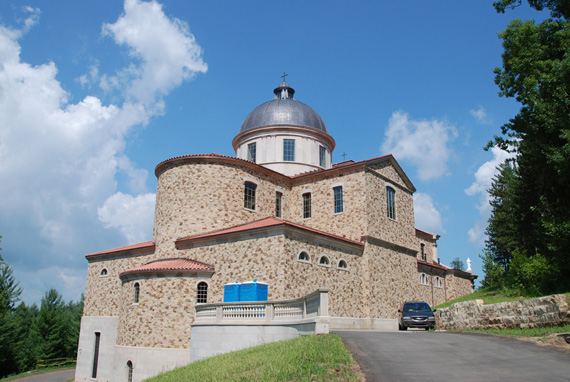
Shrine of Our Lady of Guadalupe, LaCrosse, Wisconsin
[Photo:© 2008 – Duncan G. Stroik, Architect LLC]
Beauty “ever ancient, ever new”
Embodies Truth
So this architecture is not limited to categories such as “old” or “new”. In this respect, it bears analogy to the Truth of the Catholic Faith, whose truth transcends the categories of space and time, because it points to an eternal reality.
This is where we come to what I would call the “meaning” of the shrine: In built form, the shrine points to a fundamental unity between beauty and truth. This is a theme particularly dear to Pope Benedict XVI.
At a meeting with priests in Bolzano-Bressanone on August 6, Pope Benedict reflected extensively on the relationship between reason and beauty, stating “Christian art is a rational art” (emphasis mine).
By “rational”, the pope has something particular in mind: “[L]et us think of Gothic art or of the great music or even, precisely, of our own Baroque art … this is the artistic expression of a greatly expanded reason, in which heart and reason encounter each other.”
The idea of beauty as rational is something quite foreign to the modern mythology of the artist, in which the creative genius is presented as an oracle possessed by a feeling or a primal impulse. I think in particular of documentary films about the abstract expressionist painter Jackson Pollock who, with a cigarette in one hand and a paint brush in the other, dribbled masterpieces of spatter over canvases in a trancelike state. The image has become an iconic ideal of the modern artist. So the notion of art as rational is a postulate foreign to the modernist mentality.
However, reason is crucial to Christian art. Christian art is rational because it is imbued with order. As “expanded reason”, Christian art possesses a hierarchy of relationships that unite the part to the whole. It is not an art that confuses or repels. It is an art that can be explored, understood and questioned in the imagination of the observer. It is an art that stimulates the mind and that induces emotions beyond the superficial level, and the raising of the heart to realms beyond itself.
It is on the basis of this kind of ordered and hierarchical beauty, which involves the mind and the heart, that the order and mystery of the Christian faith is proclaimed.
Through this rational art, as Pope Benedict stated, “we succeed in visibly proclaiming God, Christ, and all His mysteries: here they have acquired a form and look at us.… All the great works of art … the Gothic cathedrals and the splendid Baroque churches — they are all a luminous sign of God and therefore truly a manifestation, an epiphany of God”.
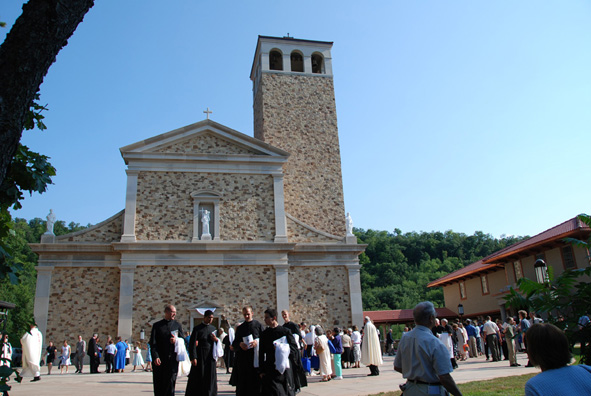
Front of Shrine shows use of native stone,
Shrine of Our Lady of Guadalupe, LaCrosse, Wisconsin
[Photo:© 2008 – Duncan G. Stroik, Architect LLC]
The “Hellenic” Quality of Truth and Beauty
This “rationality” that is essential to Christian art and architecture has its foundation in the thought and art of Ancient Greece. Pope Benedict clearly articulated the necessity of the Greek tradition in his remarks at the University of Regensburg in 2006. In that speech, the Holy Father asserted that the modern difficulty of reconciling faith and reason is a direct result of a process of what he calls “dehellenization” — a manifest turning-away from classical thought and art that preceded Christianity. A return to the traditions of Western thought and culture, which began in Greece and can be traced universally through the thought and culture of East and West until the Reformation, is not merely one option among many for contemporary theologians and artists; rather, that tradition is necessary for illuminating the inherent unity between faith and reason, the lifeblood of Catholic theology.
The pope’s claim, especially in this era of relativism, may seem for many to be unsophisticated; after all, no one philosophical system or mode of representation can capture the entire mystery of God. Therefore, how can it be proved that the “Hellenic spirit” is indispensable to Christianity?
Perhaps the answer lies in the Church’s own experience, since, as Pope Benedict argues, the attempt to dehellenize Christianity has done little more than to deprive it of its rationality, which in the end de-Christianizes it. After all, Christ, who is Person, is also the Logos, according to Saint John.
Now just as the dehellenization of thought rent asunder the providential convergence between faith and reason, an analogical dissociation between faith and beauty can be traced in the sphere of architecture, with the rise of the modernist movement in the early 20th century.
The intention of modern architecture was also a kind of dehellenization, because it tried to create a new architecture of feeling without reason, which is not a Christian conception of art. When modernism is used for the design of Catholic churches, there at once arises an atmosphere of dissonance, because the faith, which is always in accord with reason, becomes housed in a building that strives for an art separated from reason.
This last observation illustrates how the rationality of the Greek foundations of truth and art is necessary to communicate the image of the Logos, the Word incarnate, the Son of God.
While devotions to the humanity of Christ (such as the Sacred Heart), to the Blessed Virgin, the angels and saints certainly can and do occur in modernist churches, nevertheless on the level of emotion, these devotions often “feel” dissonant within the non-rational environment of modernist architecture.
Without rationality, the faith is not opened to understanding, and analogously the divinity of Christ cannot be fully disclosed by His humanity! All that is left is an aloof “god” of transcendent Spirit.
Is it any wonder that, in the environment of a culture that has embraced modern theology and modern architecture that there has been an infiltration of New Age spirituality into Catholic practice, in which God is reduced to “pure spirit”, and in which traditional devotions have lost their moorings?
The Shrine’s Beauty As “Expanded Reason”

View of side aisle, with shrines, decorative pilasters
Shrine of Our Lady of Guadalupe, LaCrosse, Wisconsin
[Photo:© 2008 – Duncan G. Stroik, Architect LLC]
It is against the dual background of the relationship between beauty and truth, and of the Hellenic quality of beauty and truth, that the new Shrine of Our Lady of Guadalupe represents a return to Christian truth, to Christian beauty, and to the fostering of Catholic devotions. Specifically, it is because the shrine is a rational work of architecture that its particular meaning can be “read” by an examination of the composition of its elements.
For example, what is noticeable first and foremost about the new shrine is that its plan is typical of most Italian Baroque churches built after the Council of Trent: The walls of the clearly defined nave, supported by fluted Corinthian pilasters (flat columns) and arches, are spanned by a simple barrel vault; at the crossing of the nave with the transept, strong piers articulated by the same Corinthian pilasters support a luminous dome. Yet unlike most grand churches of the Italian Baroque (e.g., Vignola’s early Baroque Il Gesù built in the late 16th century in Rome, in which the pilasters between the arches are doubled for solidity and support) Stroik’s design favors a simpler approach.
The arches are interspersed by single pilasters, and the side aisles are not divided up into separate chapel rooms (as found in Il Gesù) but remain open, allowing the space and light to flow from one to the other. This, in effect, dematerializes the nave wall, allowing the interior to be flooded with light.
Moreover, as the walls, columns, and ornamentation of the shrine are painted with colors that match the Virgin of Guadalupe’s clothing, the lightness of the walls and the ethereal nature of the vaults and dome becomes an “echo” of Our Lady’s image on Juan Diego’s tilma or cloak. For just as the image of the Virgin of Guadalupe appears suspended above the colors of the rainbow and clothed with the rays of the sun, the vaulting of the interior of the shrine is full of light, and appears to float effortlessly above the arches and pilasters of the interior. In this way, the architecture is imbued with the spirit of Our Lady of Guadalupe. Thus, any pilgrim ambling among the paintings and statuary of the shrine might experience that he is walking within the mantle of Our Lady.
The baldachin over the altar of sacrifice (see front cover), modeled after the one at the Roman basilica of Saint Mary Major, is perfectly scaled and detailed. The colored marble Corinthian columns, unfluted and otherwise unornamented, accord with the lightness of the space. The manner in which the baldachin over the altar frames the new mosaic rendering of the image of Our Lady of Guadalupe visually connects the altar of sacrifice (the place of the daily “re-birth” of Christ in the Eucharist) to the image of the pregnant Virgin of Tepeyac. In fact, when one stands at the doors of the shrine, the Blessed Virgin herself seems to be presiding at the altar, with her folded hands aligned perfectly over the altar, in a pose evocative of the priest’s gesture just prior to the epiclesis — the invocation of the Holy Spirit during the prayer of consecration at Mass.
All of these architectural effects were planned in order to underscore the real meaning of the shrine — and this is a significant architectural achievement. The architectural language of the shrine communicates, in a visual way, the message Our Lady gave to Juan Diego in 1531: “Are you not in the folds of my mantle, in the crossing of my arms?” The architecture really does become, in the pope’s words, the “expanded reason” of the faith contained in the venerable image.
Thus, the beauty and truth of the shrine converge to evoke devotion and religious faith. It seems impossible that anyone could visit the shrine and not to be roused with love and affection for God, the Mother of God and the saints. Over and above the shrine’s architectural achievement, and even more significant than the shrine’s affirmation of the tripartite relation of beauty, faith and reason, is the love and devotion the shrine arouses in the hearts of the faithful. The shrine will surely inspire people to greater love of and devotion to Christ, the Virgin Mary and the saints, “visibly proclaiming God, Christ, and all His mysteries”.
Thus the mission of the shrine is accomplished through its reasoned beauty, drawing people to the transcendent truth of Christ, ultimately to eternal life.

Dome repeats colors of the Virgin’s mantle
Shrine of Our Lady of Guadalupe, LaCrosse, Wisconsin
[Photo:© 2008 – Duncan G. Stroik, Architect LLC]
***
Father Noah Waldman, a priest of the Archdiocese of St. Louis, received his undergraduate degree from Princeton University, and his Master’s in Architecture from Notre Dame University.
***
*

